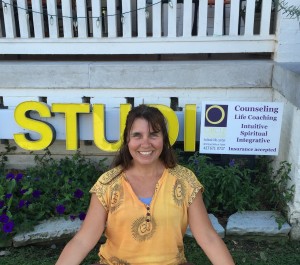

Candace Faith Fruge, manager of Circle on the Square: Holistic Life Center, shares a passion for transformative, holistic healing with her yoga students throughout Springfield, MO. Fruge works as a licensed professional counselor and Kundalini instructor at the center implementing Eastern and Western approaches into her therapy and yoga practice.
Circle on the Square provides one-on-one and group coursework in mindfulness, yoga and art. They also specialize in cognitive behavioral therapy and psychodynamic counseling aimed at personal growth.
The Scoop recently sat down with Fruge to discuss the major inspirations behind her teaching methods, the types of yoga classes available at the studio and the spiritual value of the practice.
What do you appreciate most about yoga?
Yoga is the science of union, so all of my work is geared toward the science of union and that can be defined in a lot of ways. It is a mind, body and spirit integration that includes mental, physical and emotional alignment. Yoga can be very active, or it can be more passive. In its idealistic state it is supposed to incorporate mindfulness and body awareness. Not so much an external state, like comparing oneself to other people in the class, but a union with yourself focused on uncovering your truth.
What was your motivation for becoming a yoga instructor?
I think mostly because of the experiences I’ve had in healing and balancing—as well as the joy, the love and the product of it—you just want to share it. Yoga is kind of a fad but our yoga is not a fad, it’s more centered. Our yoga is for people that are serious about enlightenment and healing. It is the road less traveled. I’ve mostly been a Tai Chi teacher, a bodywork therapist and a counselor. Ever since I found out that there was another way to heal the body—working with the meridians and the body’s energy, other than what was commonly known in Western medicine—I became very interested in yoga.
What types of yoga are taught at this location? Can you elaborate on their differences?
Currently, we have Kundalini Yoga. Kundalini Yoga has what is called Pranayama in it, which are breathing exercises that stimulate the body’s energy or the body’s chi. Kundalini is the fire that arises with awareness. It’s a transformative fire, so it is geared toward using our body’s energy to heal. We have Yin Yoga, where there is Yin and Yang. This practice is at a slower pace, sinking into the posture. Your body stretches deeply. It’s a nice balance with the Kundalini. We also have had Hatha Yoga, which is a beginning yoga with asana postures, sun salutations and different poses like child’s pose.
Have you carried any values or ideologies from other individuals into your own practice?
I think I learn a lot from my clients. Of course, I have also been a lifetime student, and I have had lots of teachers. I’ve had Chinese teachers, Tibetan teachers, Indian teachers and native teachers, indigenous to this country. I’ve had teachers from all different parts of the country in different waves of my life. I appreciate the teachings of all the masters like Buddha, Jesus and Guanyin. Theosophy has been an important part in my teachings, which is a blend of philosophy and theology. Finally, Taoism has influenced me and the five elements of Chinese medicine: fire, earth, metal, water and wood.
What are the benefits of yoga, in your opinion?
Being present in the moment, feeling good, sensing body processes and appreciating your life. Yoga is a way to cope and manage with things going on in the world that are very sad. I’ve experienced a full gamut of emotions. I’ve been in the deepest depression, and I’ve been through all these different states. It’s amazing to be able to help others because we ultimately do not have to live in suffering. If we do have some pain, we have the means to be with it in a way that is not all-encompassing.
What makes the community at Circle on the Square unique?
It’s more of a sangha, which is a spiritual community, where we work on ourselves and work on ourselves together with others. Yet, we also help support each other in our spiritual growth. I would like to think we hold a space of enlightenment. It’s a place of refuge, affirmation and awakening. People can come to find support and confirmation.